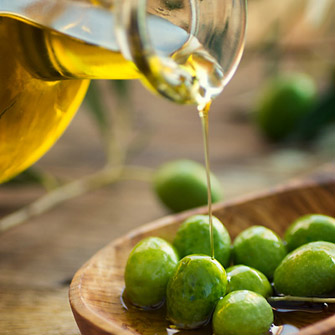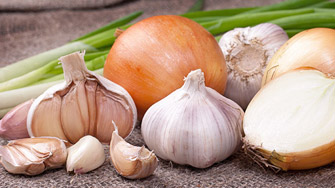|
Inflammation is the process by which the body's white blood cells and substances they produce protect us from infection from foreign organisms such as bacteria and viruses. This natural process is vital to a person's good health. It is the cornerstone of the body's healing response, bringing more nourishment and more immune activity to a site of injury or infection. We can be grateful for inflammation. It is the result of the immune system defending the body against foreign invaders, and repairing damaged tissue.
Unfortunately, it is also a process that can take an unwanted course.
Did you know? Approximately 63 million Americans suffer chronic joint pain, aching, or stiffness, according to the Centers for Disease Control and Prevention (CDC). Joint pain from an old injury is common and can lead to arthritis, which is inflammation in the joints that can in turn cause cartilage to break down. This condition can also result from wear and tear over time, which is why so many older people have arthritis. In fact, the CDC reports nearly half of Americans over 65 are afflicted with this disease. Include those who suffer from acute joint injuries and the painful swelling associated with autoimmune conditions like rheumatoid arthritis, and you’ve got a whole lot of people in pain, much of it persistent.
Inflammation occurs when the cells in damaged tissue release a bevy of chemicals to respond to a foreign assault. These may include prostaglandin, a lipid, and two types of proteins: nuclear factor kappa beta (NF-kB) and cytokines. These substances send signals to the body’s immune system, causing white blood cells to rush to the scene, directly triggering inflammation.
Once a wound has healed, the inflammatory response is supposed to cease. But in the joints, the switch often doesn’t get turned off, leaving residual swelling that wreaks havoc on elbows, knees, and ankles.
Taking a nutrition-based approach to managing joint health requires a willingness to experiment, as well as a certain amount of patience. It is not intended as a weight-loss program, although it is highly possible, nor is an anti-Inflammatory diet an eating plan to stay on for a limited period of time. Waging a nutrition war against inflammation is way of selecting and preparing anti-inflammatory foods based on scientific knowledge of how they can help your body maintain optimum health. It can also provide steady energy and ample vitamins, minerals, essential fatty acids, dietary fiber, and protective phytonutrients.
In short, to reduce inflammation in your body, you should include as much fresh food in your diet as possible. Seek a variety of food each day, eliminating or minimizing your consumption of processed foods and fast foods.

OMEGA-3 FATTY ACIDS
In simple terms, you want your diet to create and anti-inflammatory environment in the body. Omega-3 fatty acids are particularly good for this, as they actually change the fatty-acid composition of cells, tamping down inflammation-instigating cytokines.
Food Sources:
 Eggs, and preferably, pastured eggs enriched with omega-3s. Hens lay eggs with more healthy fatty acid if they’re fed fish oil, flaxseeds, or algae. Eggs, and preferably, pastured eggs enriched with omega-3s. Hens lay eggs with more healthy fatty acid if they’re fed fish oil, flaxseeds, or algae.
 Coldwater fish (particularly salmon, mackerel, and herring). A good daily dose of omega-3 is approximately 1,000 mg: Basically, that is equivalent to a wallet-sized piece of fish. Coldwater fish (particularly salmon, mackerel, and herring). A good daily dose of omega-3 is approximately 1,000 mg: Basically, that is equivalent to a wallet-sized piece of fish.
 Flaxseed oil. This omega-3 is a plant-based alpha-linolenic acid (ALA) that the body must convert to eicosapentaenoic acid (EPA) and docosahexaenoic acid (DHA) to reap anti-inflammatory benefits. Flaxseed oil. This omega-3 is a plant-based alpha-linolenic acid (ALA) that the body must convert to eicosapentaenoic acid (EPA) and docosahexaenoic acid (DHA) to reap anti-inflammatory benefits.
A tablespoon of flaxseed oil delivers 700 mg. Mix into food — or slurp it straight if you’re up for it.

ANTHOCYANIN
This powerful antioxidant is responsible for giving fruits red, blue, and dark-purple hues. More importantly, it has been shown to provide protection against liver injuries, aid in the reduction of blood pressure, improve eyesight, and stop production of cytokines (a strong anti-inflammatory
property).
Food Sources:
 Blueberries, raspberries, strawberries, cranberries, and black currants. Feel free to take in these delicious anthocyanin sources regularly! Blueberries, raspberries, strawberries, cranberries, and black currants. Feel free to take in these delicious anthocyanin sources regularly!
 Stone fruits such as plums and cherries. Note that sweet cherries contain the powerful pigment, but in lower amounts than their tart cousins. Drinking 8 to 16 ounces of tart cherry juice daily in place of other calories,has been shown to have positive anti-inflammatory effects Stone fruits such as plums and cherries. Note that sweet cherries contain the powerful pigment, but in lower amounts than their tart cousins. Drinking 8 to 16 ounces of tart cherry juice daily in place of other calories,has been shown to have positive anti-inflammatory effects

|
|
CALCIUM AND VITAMIN D
We all know we need calcium for strong bones and teeth. However, this mineral also assists in muscular contractions. Without sufficient calcium, you could be putting yourself at risk for bone loss, diminished bone density, and ultimately osteoporosis. Furthermore, Vitamin D is crucial to your body’s ability to absorb calcium.
Food Sources:
 Dairy products, including milk, yogurt, and cheese (unless you have a sensitivity or allergy), are rich in calcium. Choose organic to limit your exposure to antibiotics and hormones. Dairy products, including milk, yogurt, and cheese (unless you have a sensitivity or allergy), are rich in calcium. Choose organic to limit your exposure to antibiotics and hormones.
 Collard greens, kale, turnip greens, arugula, and mustard greens. These and other dark leafy greens are packed with calcium. Collard greens, kale, turnip greens, arugula, and mustard greens. These and other dark leafy greens are packed with calcium.
 Complement your calcium intake with these excellent whole-food sources of vitamin D: Egg yolks, and fatty fish like salmon and mackerel. Complement your calcium intake with these excellent whole-food sources of vitamin D: Egg yolks, and fatty fish like salmon and mackerel.

FIBER
Foods rich in fiber slow carbohydrate absorption in the body. Furthermore, fiber helps to control blood-sugar levels, keeping glucose and insulin in check, and depriving inflammation. You should try to eat 40 grams of fiber each day.
Food Sources:
 Green peas, kale, artichokes, and spinach. Generally, the darker the color of the vegetable, the higher the fiber content. Green peas, kale, artichokes, and spinach. Generally, the darker the color of the vegetable, the higher the fiber content.
 Whole-kernel grains such as brown rice, quinoa, and oatmeal. Whole-kernel grains such as brown rice, quinoa, and oatmeal.
 Legumes, including black beans, split peas, and lentils. These contain about eight times more fiber than whole grain bread. Legumes, including black beans, split peas, and lentils. These contain about eight times more fiber than whole grain bread.

SULFUR
Sulfur is the third most abundant mineral in your body, after calcium and phosphorous. It's an important mineral element that you get almost wholly through dietary proteins. Sulfur is considered the building block on which connective tissue is built, including the cartilage, tendons, and ligaments of your body.
Food Sources:
 Garlic, onions, and leeks. Alliums contain the flavonoid quercetin, an antioxidant with anti-inflammatory properties. Garlic, onions, and leeks. Alliums contain the flavonoid quercetin, an antioxidant with anti-inflammatory properties.
 Eggs, poultry, fish, and legumes. These protein-rich foods are good sources of amino acids that contain sulfur. Eggs, poultry, fish, and legumes. These protein-rich foods are good sources of amino acids that contain sulfur.
 Cruciferous vegetables like broccoli, cauliflower, and Brussels sprouts. Seek a daily serving of these sulfur-rich veggetables.. Cruciferous vegetables like broccoli, cauliflower, and Brussels sprouts. Seek a daily serving of these sulfur-rich veggetables..

UNHEALTHY FATS
It is true that the body needs omega-6 fatty acids. However, they are beneficial in far smaller amounts than what we typically consume as Americans. Many omega-6 fatty acids trigger a pro-inflammatory release of cytokines. Partially hydrogenated oils, known as trans fats, can also stoke swelling. Avoid excess omega-6s by steering clear of refined vegetable oils like soy, corn, safflower, and cottonseed. We should avoid commercially fried foods because of the low-quality oils that are typically used. Use extra-virgin olive oil as a main cooking oil.
REFINED SUGARS
White sugar and high-fructose corn syrup are found in a wide range of prepackaged foods and drinks. The digestive system breaks down processed sugars into basic sugars, including glucose. In turn, the pancreas releases insulin. Because, glucose is considered an inflammatory agent, high levels kick-start the release of NF-kB and cytokines.
SIMPLE CARBS
While many fruits and dairy products, such as milk, fall into the simple carb category, the most problematic are highly processed foods (such as white bread, white rice, cookies, cakes, crackers, and cereals). The chemical structure of these simple carbs is weak. They quickly break down into glucose when they are ingested into the body. Much like refined sugars, this rush of glucose triggers the body’s inflammatory response. |